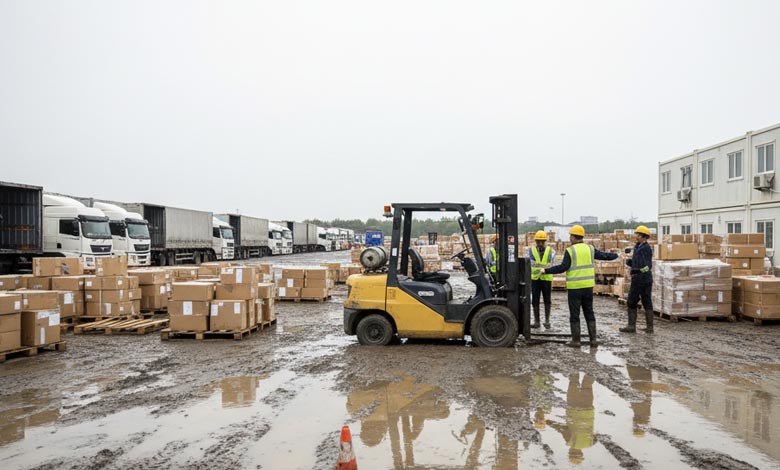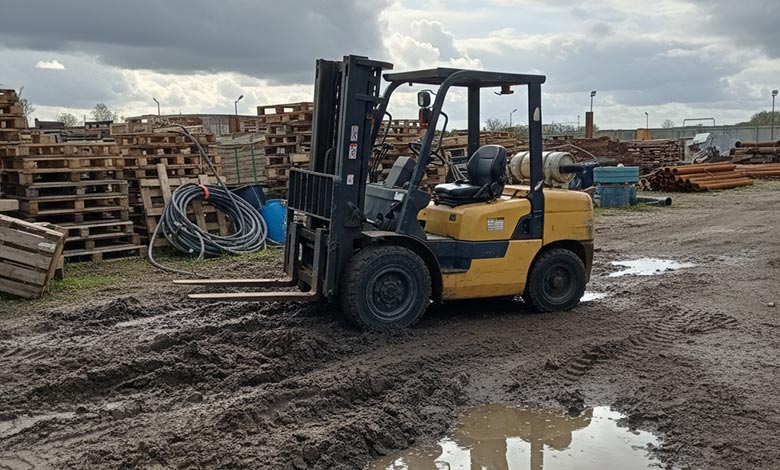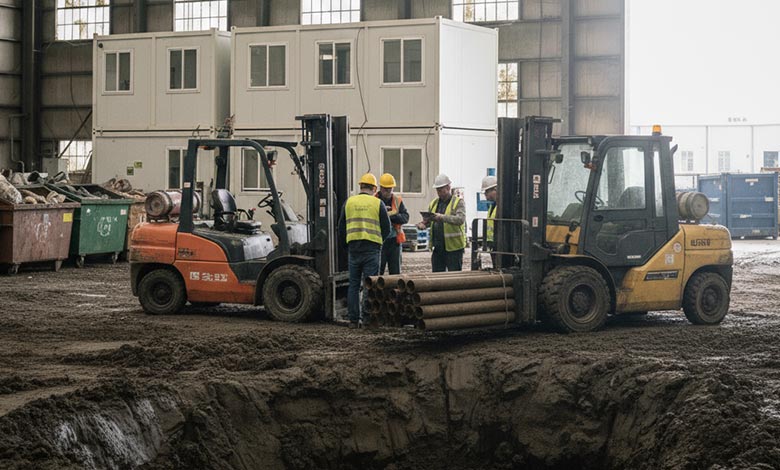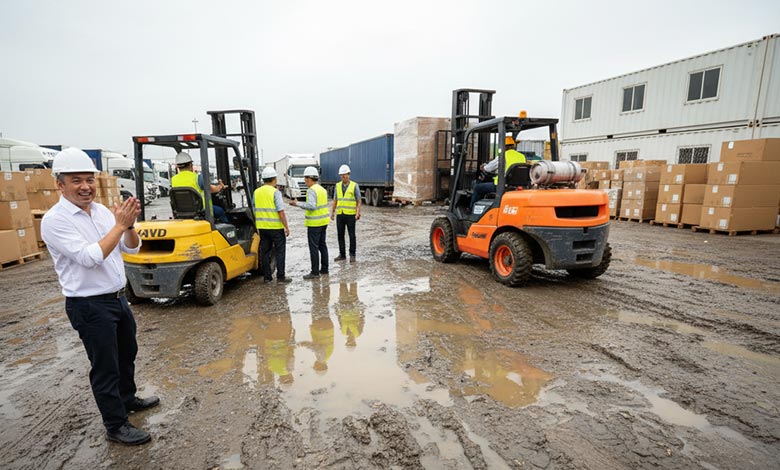Does a little rain bring your entire logistics operation to a grinding halt? You're not just losing time; you're losing money and customer trust with every stuck forklift.
To guarantee efficiency, use 4WD rough terrain forklifts1. Their superior traction and power distribution allow them to operate at full capacity on mud, slopes, and wet surfaces where standard 2WD forklift2s would get stuck or become unsafe.

As a veteran in the industrial machinery space, I've had countless conversations on-site with managers just like you. The same theme always comes up: the true test of an operation is how it performs when conditions aren't perfect. This focus on real-world reliability is exactly why my team and I founded BLANC-ELE back in 2017. Let me walk you through how to permanently weather-proof your workflow.
First, Why Do Standard 2WD Forklifts Fail in Bad Weather?
The first step is understanding the exact breaking point of your current fleet. A standard forklift might seem fine on a sunny day, but it's designed with a fatal flaw for outdoor work.
Standard 2WD forklifts are built for smooth, dry, paved surfaces. They lack the traction, ground clearance, and power distribution to handle mud, grass, or slopes, causing them to slip, get stuck, and become useless.

Let's look at a real-world example. A large logistics partner of ours in Southeast Asia hit a wall. Their outdoor yard was a hub of activity until it rained for three days straight. The ground turned to a slippery, muddy mess, and their fleet of standard 2WD forklift2s was completely neutralized.
The problem is simple mechanics. A 2WD system sends power to only two wheels. When one of those wheels hits a slick patch and starts spinning, all the engine's power goes to that spinning wheel, and the machine doesn't move.
My client reported that to get any work done, they had to:
- Slash load capacities to just one-third of normal.
- Reduce travel speeds by more than 50%.
This wasn't a solution; it was a disaster. It created massive backlogs, triggered financial penalties from their e-commerce clients for delays, and created huge safety risks for their operators. Recognizing this breaking point is the first step toward building a more resilient operation.
Next, How Does 4WD Provide Unstoppable Uptime?
Once you've identified the weakness, the next step is to deploy the right technology to eliminate it. This is where a 4WD rough terrain forklift becomes a strategic tool, not just a machine.
4WD technology provides unstoppable uptime3 by delivering engine power to all four wheels. This ensures constant traction, allowing the forklift to power through mud, climb wet slopes, and maintain stability on uneven ground.

Think of it as having four points of contact working for you instead of just two. In our R&D center, we focus on this core advantage. Our 4WD system is designed to intelligently distribute torque, so if one wheel slips, the others compensate and keep the machine moving forward with its load.
The Tactical Advantages of Implementing 4WD:
- Constant Motion: Your operators can confidently drive across muddy or soft sections of your yard without fear of getting stuck. The workflow never stops.
- Full Capacity Operation: The superior grip and stability mean you can carry fully-weighted pallets. No more reducing loads and making extra trips.
- Maintained Speed: Your team can operate at normal, efficient speeds, keeping your entire logistics schedule on track.
| Metric | Standard 2WD Forklift | True 4WD Rough Terrain Forklift |
|---|---|---|
| Performance in Mud | Gets stuck; operation stops | Powers through; operation continues |
| Traction on Slopes | Prone to slipping; unsafe | Stable and secure |
| Productivity in Rain | Drastically reduced | Unaffected; 100% |
| Operational Uptime | Weather-dependent | All-weather; guaranteed |
My client in Southeast Asia initially bought our 4WD forklifts as a backup. They quickly realized their mistake and made them their primary yard machines. Why? Because predictable uptime is the foundation of a profitable logistics business.
Finally, How Do You Turn Uptime into Higher Profits?
The final step is connecting the equipment's capability to your bottom line. An efficient machine is nice, but a profitable operation is the goal. All-weather uptime is a direct path to higher profits.
You turn uptime into profit by eliminating costly downtime4, maximizing billable work per hour, avoiding financial penalties for delays, and building a reputation for reliability that attracts more clients.

Let's look at the simple math. My client was losing money hand over fist during their rain-induced shutdown. The costs included not just lost revenue, but also penalty fees from their e-commerce partners and reputational damage.
By implementing a fleet of 4WD forklifts, they transformed their financials:
- Eliminate Downtime Costs: The most immediate impact was the elimination of costs associated with weather delays. This alone saved them a fortune.
- Maximize Throughput: By operating at full speed with full loads, they could process more goods every single day. This increased their revenue-generating capacity without adding more staff.
- Strengthen Client Relationships: By guaranteeing delivery schedules regardless of the weather, they became the most reliable logistics partner in their region. This led to stronger contracts and new business opportunities.
My client told me the ROI was shockingly fast. The investment paid for itself in less than a year, purely based on the prevented losses and the increase in daily efficiency. This is how you use the right technology to build a stronger, more profitable business.
Conclusion
Using 4WD rough terrain forklifts1 is how you take control of your operation, guaranteeing efficiency and profitability by making your logistics workflow completely independent of the weather.
Explore how 4WD forklifts can enhance your logistics operations and ensure efficiency in challenging conditions. ↩
Explore this resource to understand why 2WD forklifts struggle in bad weather and how it impacts logistics efficiency. ↩
Explore the concept of uptime and its significance in maintaining productivity. ↩
Discover effective methods to reduce downtime and improve overall efficiency. ↩
